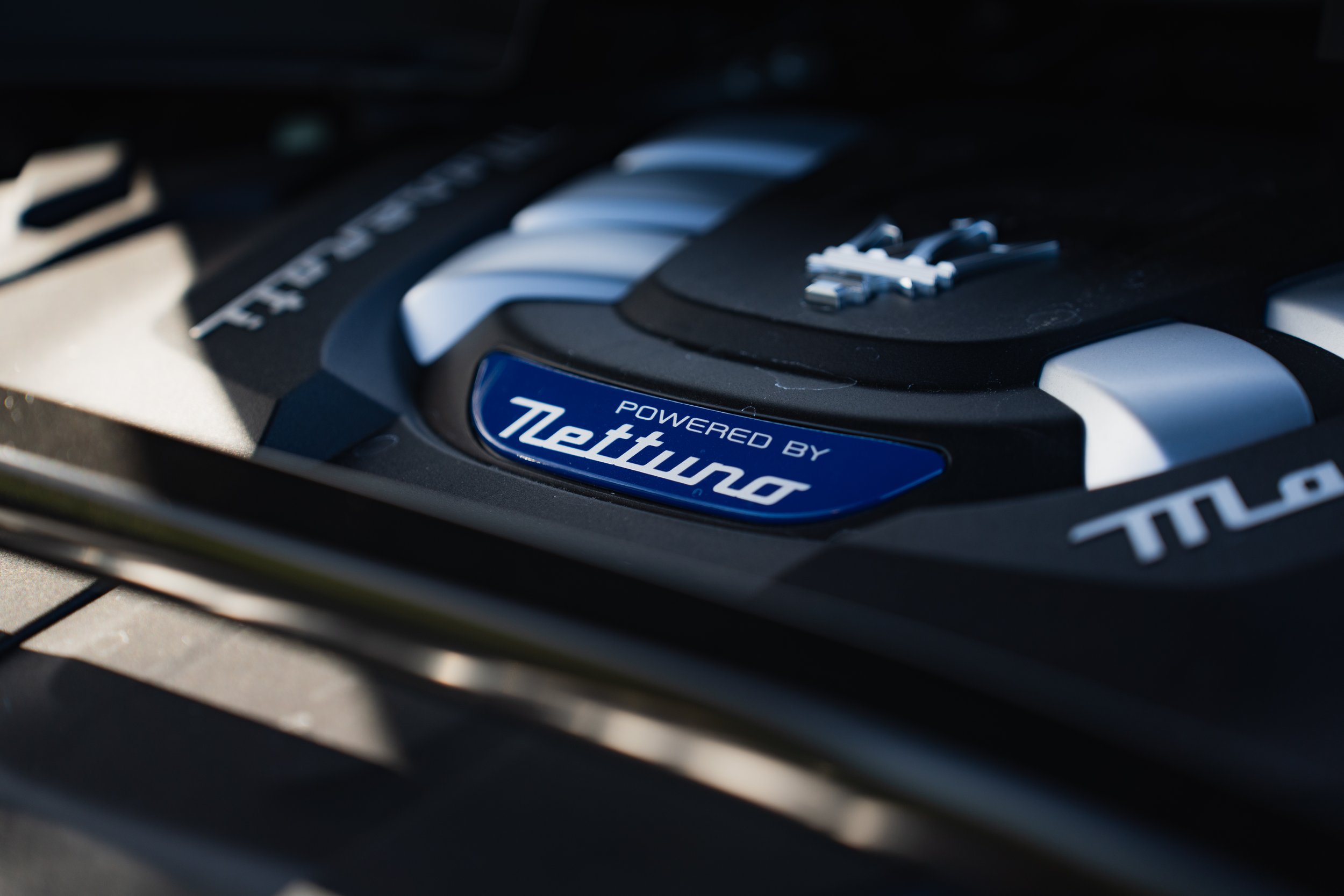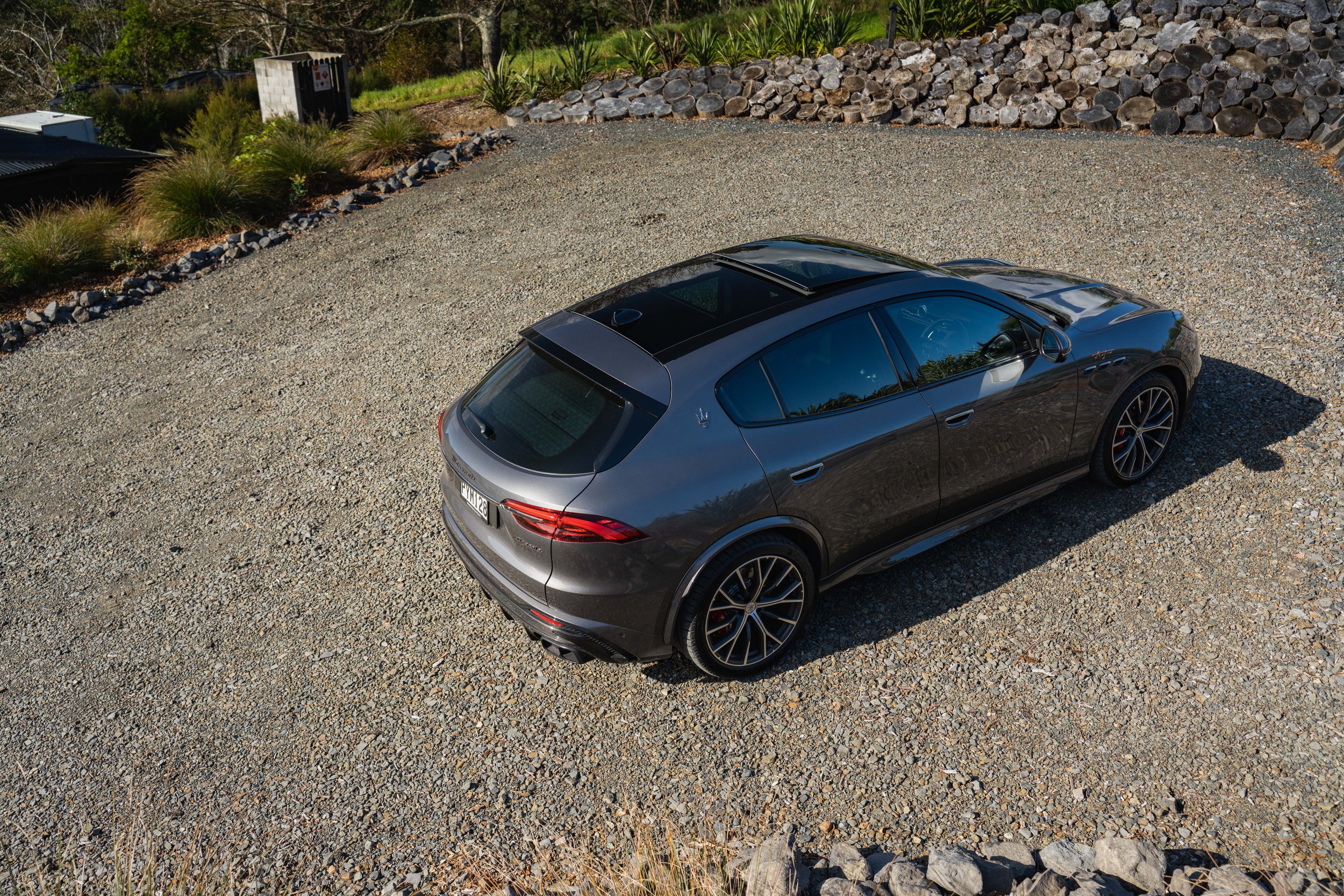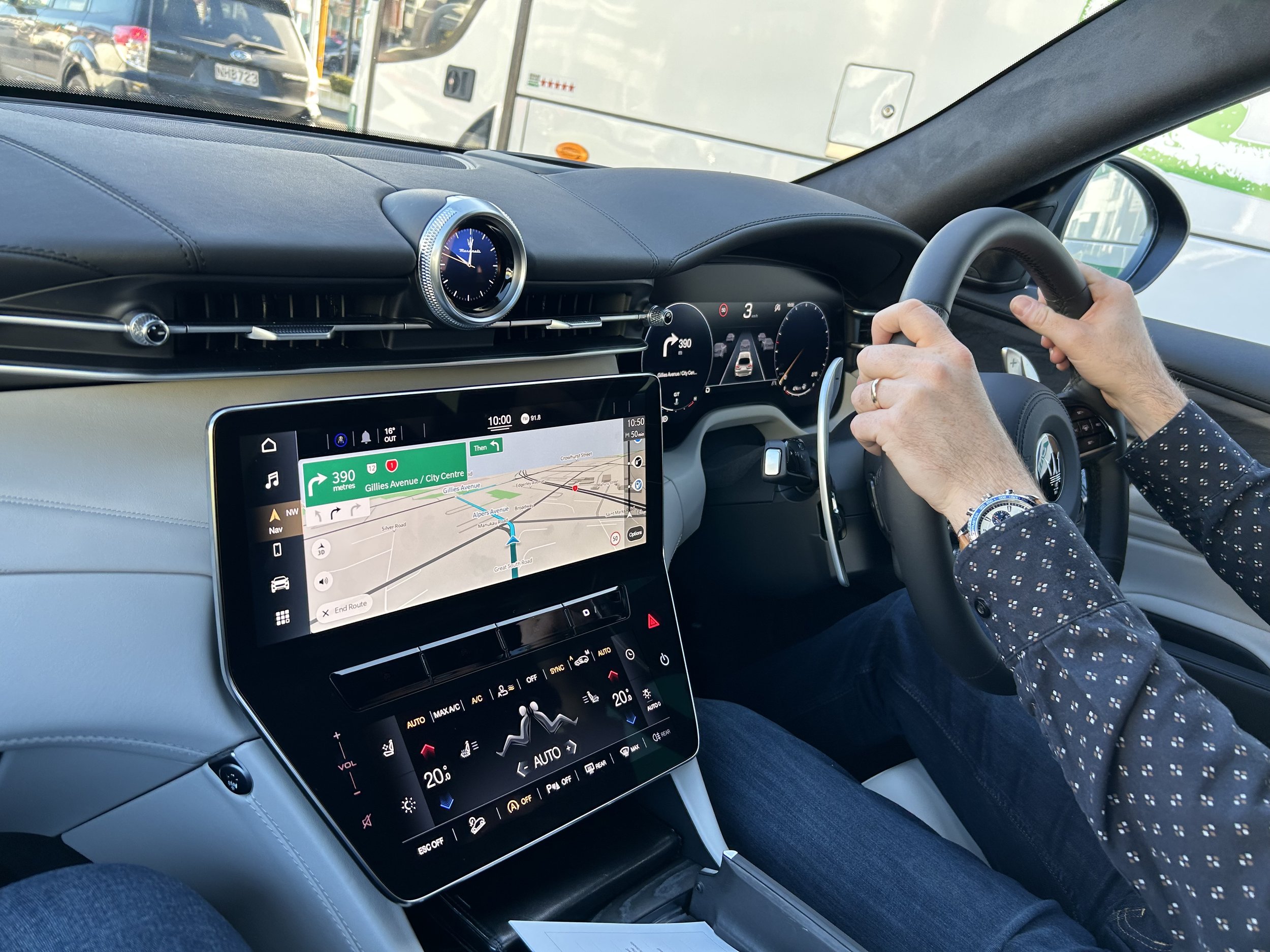Maserati Grecale first drive: Flair for the (well-funded) family
/Here it is, the ‘affordable’ and practical gateway for those wanting to drive something from a brand famed for sports cars and performance.
YET another five-seat medium-sized SUV dripping in premium chutzpah and sporty intent - crickey, is this sector getting packed, or what?
Well, there’s always room for an extrovert, right? Enter into a German-dominated scene the Maserati Grecale. Late to this segment, the roll-out having been delayed by Covid-19 and the semi-conductor shortage, this highly characterful sharp looker arrives in $120,000 GT, $140,000 Modena and $180,000 Trofeo formats.
The GT and Modena are powered by a 2.0-litre turbocharged four-cylinder petrol engine with 48-volt mild-hybrid assistance. In these it develops 221kW/450Nm, lifting to 242kW/450Nm in the higher-priced version.
Zero to 100kmh times are 5.6 seconds and 5.3 seconds. Top speed for both is 240kmh.
The Trofeo steps up considerably in being equipped with the 3.0-litre 'Nettuno' twin-turbocharged V6 petrol engine from that MC20 supercar, detuned in this placement but only slightly - it’s still punching out 390kW and 620Nm. It claims a 0-100kmh sprint time of 3.8s and will peak at 285kmh.
All variants are fitted with an eight-speed torque-converter automatic transmission mated to an all-wheel drive system – which can send all drive to the rear axle under certain conditions.
The trident brand already has an SUV in circulation, the Range Rover Sport-rivalling Levante that has been in build since 2016.
Even back then SUVs were accounting 50 percent of the global luxury market, since then the slice has grown large. Which means Grecale is more important. The compact segment it aims at is a goldmine.
Grant Barling, Maserati’s Sydney-based general manager for New Zealand and Australia, reckons smaller will be bigger than big: Though he declines to give volume predictions, he believes this car might claim 70 percent of the make’s volume here. It’s also expected to achieve a higher percentage of female buyers than any other Maserati.
That shouldn’t raise expectation of daily sightings of a car that takes the name of a wind - a tradition going back to 1963 - that in this instance a strong north-easterly that blows over the Mediterranean.
Maserati represents in two dealerships. One in Auckland, run by Wingers, which hosted the media launch with Maserati New Zealand and Australia. The other is in Christchurch, under the Euromarque banner.
Even among high-end brands, Maserati has been a select choice here, with 61 registrations in 2022 across all six models it sells here.
Apart from Levante, the make has the Ghibli and Quattroporte sedans and the aspirational MC20 super car, in coupe and soon-to-add open (Cielo) form.
Who will buy a Grecale? Well, clearly even though it is the company's least expensive model here, it's obviously it’s not aimed or priced against buyers of the most popular car in this size category, Toyota RAV4.
You might imagine it could rival the BMW X3 and the Alfa Romeo Stelvio, which comes out of the same factory in Cassino, Italy.
Maserati designers claim the slanted rear windscreen means this is a rival for the BMW X4, Range Rover Velar and Mercedes-Benz GLC Couple. But those who have been enjoying the image and dynamics of the Porsche Macan are also in this customer profile, Barling says.
Standard equipment includes a 12.3-inch digital instrument cluster, a 12.3-inch infotainment display, head-up display, Sonus Faber sound system that accepts Apple CarPlay and Android Auto and a tri-zone climate control, which can be adjusted through an 8.8-inch touchscreen. A 'Fuoriserie' personalisation programme offers additional preset option packages.
Grecale and Stelvio- and the Jeep Grand Cherokee - all link in being commonly based off the Giorgio platform.
In respect to the Italian cars there’s wheelbase difference, Grecale gaining another 50mm. In respect to physical size, it’s 159mm shorter and 43mm narrower than Levante, and the wheelbase is 103mm shorter. Nonetheless, that still makes the wheelbase nearly 100mm longer than a Porsche Macan.
Looks-wise, the Maserati stands no chance of being confused with its blood relations. This is a marque that works hard to imbue a sense of the romance of its rich history, not least those that formative period of the 1950s and 60s when it was rolling of a succession of sports cars and elegant coupes that rattled another famous brand from Modena, Ferrari.
Potentially, keeping that flame burning is a harder task with a SUV than any other kind of car, which is perhaps why, in addition to sporting the brand’s trademark front grille and the usual trio of air vents in the front wings, below with are badges denoting the variant, there are plenty of trident logos.
However, the brand says the styling also strives to link to the MC20; the cars, for instance, have the same swept-back headlight styling. The way the roof line peaks above the driver then slopes down towards a spoiler integrated into the hatch reminds designers put a bigger focus on sport than on utility. The shape of the rear lights? A nod to history. They more or less replicate those fitted to an important past car, the 3200 GT released in 1998.
Safety features including autonomous emergency braking, adaptive cruise control with stop and go, blind-spot monitoring, lane-keeping assistance, rear cross-traffic alert and driver fatigue monitoring.
The cabin, in terms of appearance, quality and practicality, hits the mark. Maserati has always aced with fit outs that deliver rich Italian luxury in the finest tradition; here the leather upholstery, lush carpets and items in actual metal, notably those paddle shifters mounted just behind on the column, look and feel very expensive.
It also reaches to actual carbon fibre across some surfaces as well; a buyer can order it textured in natural form - as per a car I drove - or rendered with a glossy finish.
A customisable clock at the top of the dash takes a classic Maserati design cue into a digital environment.
As is usual now, the car relies on electronic display screens, one a standard infotainment display and the other a smaller panel dealing with a range of other controls.
The primary screen is smaller than average, which Maserati says was intentional - it believes the trend to make these the dominant feature of a cabin is an error.
Another unorthodox design trait is with the gear selection; while it is far from being the first make to divest a traditional gear selector, the preference here for a button layout positioned below the infotainment screen is highly unusual.
In recognition this might be flummoxing in tight manoeuvres such as parking, it has engineered the left paddle shifter to engage Reverse and the right side one to operate Drive at walking speed.
The thick-rimmed three-spoke steering wheel holds two circular dials, a representation taken from MC20. One controls the driving modes (Off Road, Comfort, GT and Sport, like in the standard Grecale, plus hardcore Corsa for the V6). The other is the engine starter button. Secondary buttons on the wheel hub provide evidence of Stellantis Group parts sharing - they are said to be shared with the Grand Cherokee.
The SUV practicality aspects delivers a surprisingly spacious interior. Maserati claims both the front and rear seats will comfortably accommodate 99th percentile adults thanks to that long wheelbase.
Even with the driver’s seat set to accommodate a tall adult, a passenger of similar height can sit behind. Back seat headroom is good, even in editions with the sliding glass roof, and there’s reasonably decent foot room and a commodious boot, with 535 litres’ cited capacity.
The Trofeo is, of course, the family extrovert with its quad-exit exhaust, 21in alloy wheels that cover larger, cross-drilled discs clamped by imposing six-pot front, four-pot rear callipers and a rear track that’s stretched by 34mm to 1982mm.
Every enhancement on the flagship is for rational reason. Trofeo selling itself as an SUV with the soul of a supercar seems quite an allure.
While the Nettuno six is detuned a touch in this application and achieves different turbochargers, rest assured that there is plenty of indecent performance brio. The installation here also lends the power plant a wet-sump oiling system and cylinder deactivation technology that shuts off the right bank in low-load conditions, like when cruising.
The 2.0-litre engine is also not adverse to fun times, either. Ostensibly it’s a familiar Stellantis standard bearer, being the Global Medium T4 engine also in Ghibli plus some Alfas and Jeeps.
The version behind the Maserati badge, however, is fitted with an electric supercharger in addition to its normal exhaust-gas turbo, in order that it has better low-end response. Deploying 48V mild-hybrid technology obviously allows efficiency, but the Italians say it was foremost for or performance and drivability.
Within the 2.0-litres span, the GT’s rear differential is a conventional type while the Modena has a limited-slip diff. The GT also misses out on the widened rear axle track of the Modena and its adaptively damped steel-coil sports suspension.
Adaptively damped, height-adjustable air suspension, called Skyhook, is optional on both variants.
The downtime during the period when the roll-out was held up was used productively, Maserati sending more than 250 prototypes into evaluation programmes across Japan, the United States, the United Arab Emirates, China, Finland and Italy. Mostly that was, by all accounts, to keep refining the driving feel.
From this first taste, it’s clear that driving dynamics played a significant role in chassis development. Potentially, this might be a turn-off for some; it’s clearly more sporty than some rivals. If you have comfort in mind, the base 2.0-litre is the most relaxed in which to carry a family and their gear, though even it can feel a bit fidgety. In the others, the suspension is even firmer and there’s a more obvious air of athleticism. Well, you wanted Italian flair, right?
The driving schedule took us from Auckland to Warkworth, then across to the Tasman Sea side, to Kaukapakapa, from there to lunch at Good From Scratch, a restaurant and cooking school (we were excused that part) run by celebrity chef Michael van de Elzen (the Food Truck television series), then - for me - from there back to Auckland airport. Time was spent driving the GT and Trofeo, passengering in the Modena.
Those familiar with this route will know the best bit is Woodcocks Road, a twisty rising and falling delight that isn’t about outright speed but rewards anything with dexterity and a characterful, engaging power plant. That’s the Trofeo.
The flagship has the best driver’s seat; and the best driving position, because that heavily bolstered sports chair can be lowered more than the standard item, in which a tall person might find themselves placed a fraction too high.
With Trofeo, the steering was the first ingredient to impress; it’s quick, precise and well weighted, the car rotating surprisingly quickly in to corners. All the same, it’s a car that demands you take time to learn its ways. The whole package is nicely balanced, and there’s good grip, but there’s a degree of wildness to its character that, perhaps, ultimately will not take kindly to being under-estimated.
If you really want to find the edge, try Corsa mode, but with advisory this retires almost all the electronic assists. It also delivers a rigid race-ready feel that will allow virtually no yield, over even the smallest imperfections. The adaptive dampers can be controlled independently of the main drive modes, and chances are an owner will find it prudent to take time to work out what suits best.
As much as the optimal ride-handling formula is a bit of a spine-shaker, you’ll find it hard to resist as with that setting the engine is allowed to fully voice the snarling bark and bite that you expect.
The soundtrack as it rips around to the redline at just over 7000rpm is quite something else and might seem all the more special, knowing Maserati has determined to drop internal-combustion engines from its vehicle portfolio by 2030, with every model to be offered with an electric powertrain by 2025; these all having the Folgore (lightning) designation.
Grecale Folgore, coming in mid-2024, is clearly therefore an important car. It features 205kW electric motors on each axle for total outputs of 410kW and 820Nm, these feeding off a 105kWh battery.
Even though it is the heaviest edition, at 2480kg, Maserati claims a 0-100kmh time of 4.1 seconds with a top speed of 220kmh.
The car has a 400V electrical architecture, with DC fast-charging up to 150kW and AC charging up to 22kW. Predicted range is a claimed 500km on the stricter WLTP cycle, with energy consumption of 23.6kWh/100km.
Automatic battery pre-conditioning features, while an EV routing mode helps drivers plan their journeys to optimise range and locate chargers.
Four different drive modes are available: GT, Sport, Offroad and Max Range. The latter throttles the top speed to 130kmh, reduces throttle response and adjusts the climate control.
Folgore distinguished from its fossil fuelled brethren by its unique grille, with gloss black inserts on a slightly anodised silk black base. Maserati says, however, the front fascia is intended to resemble the Trofeo.
Badges and brake callipers are finished in copper and it’ll offer with a unique colour, called Rame Folgore (“copper lightning”), which is said to be inspired by the facade of the Guggenheim gallery in Bilbao.
The writer attended this event as a guest of the distributor/Wingers, with travel, a meal and small gift provided.

























